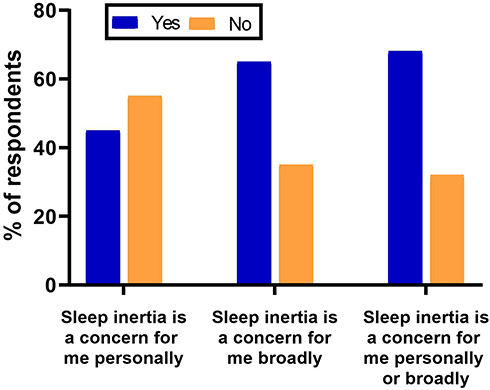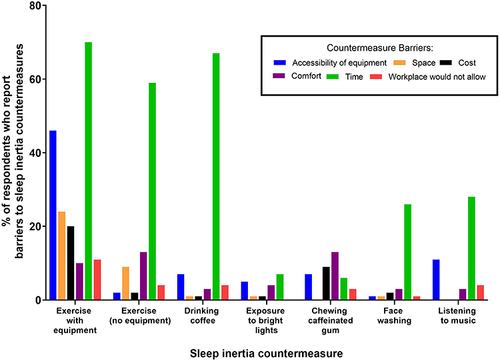Figures & data
Table 1 Participant Demographic Variables and Work Characteristics
Table 2 Themes and Illustrative Quotes for the Question “Why is Sleep Inertia a Concern for You Personally?”
Figure 1 Percentage of respondents who indicated that sleep inertia is a concern for them personally, broadly and combined percentage of concern (percentage of respondents who indicated either personal or broad concern regarding sleep inertia).

Table 3 Themes and Illustrative Quotes for the Question “Why is Sleep Inertia a Concern for You Broadly?”
Table 4 Personal Strategies Used by Participants to Help Wake Up
Figure 2 A comparison of the percentage of respondents who indicated that they believed each countermeasure would work in reducing sleep inertia with the percentage of respondents who indicate that they would use each countermeasure.

Figure 3 Prevalence of perceived barriers reported for each sleep inertia countermeasure.

Table 5 Themes and Illustrative Quotes for the Question: What Changes Could Be Made in Emergency Service Workplaces to Reduce the Impact of Sleep Inertia?
